In this test, we compare two similar chainsaws recommended for farmers or private users.
These saws are considered to be semi-professional, meaning they are above the hobby chainsaws and below the professional chainsaws in terms of specification and power.
They are similar in engine capacity and performance.
We looked at how easy it was to maintain each saw including refuelling and oiling, chain tensioning and bar adjustment, access to the air filter for cleaning and the spark-plug.
We compared what was involved in tightening the chain and the weight of both machines. A well-seasoned dry ash tree was used along with a mixture of branches to compare the saws, which really made them work.
Both saws use similar starting mechanisms. The Oleo-Mac has a decompression button on the top of the saw whereas the STIHL has a flexible transparent fuel-priming button near the starting switch.
We noticed no difference in the amount of effort in getting the saws started from cold.
Refuelling and oil-filling
Checking the fuel level on the STIHL is straightforward. For starters, the fuel tank at the rear of the saw is semi-transparent, a simple and clever feature.
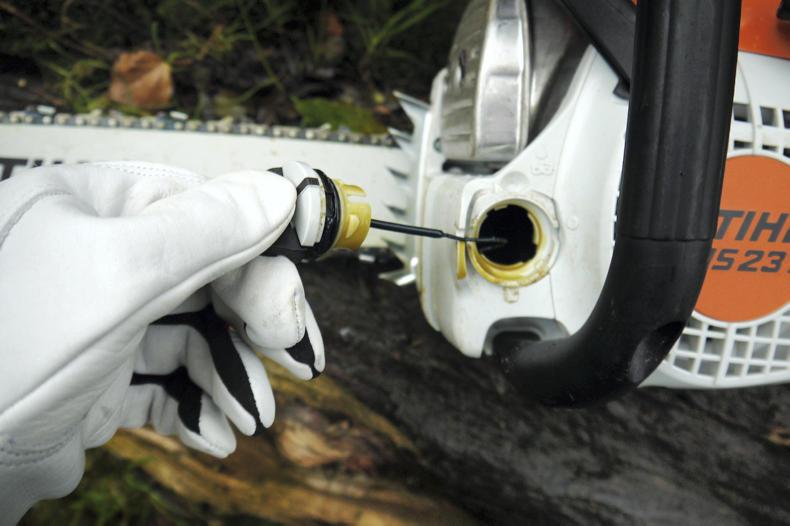
The oil tank is easily opened even when wearing gloves on the Stihl.
A quick glance should reduce the incidence of running out. The filler caps on both the oil and fuel tank do not require any tools to open them and the tank lids have a clever turn-and-close feature.
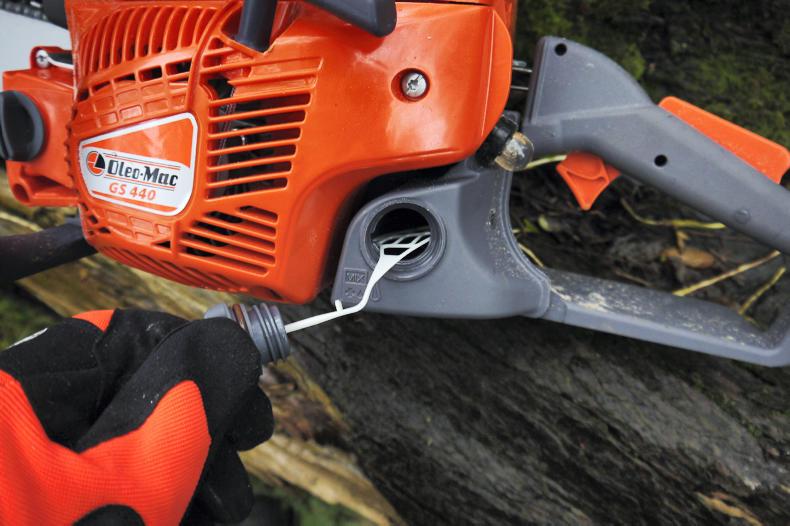
The fuel tank cap is easily opened even when wearing gloves on the Oleo-Mac.
The Oleo-Mac has a similar setup to the STIHL for refuelling. To check the fuel and chain oil levels, the tanks must be opened. No tools are required and its tank lids are large enough to make opening and closing with gloves easy.
Spark plug and air-filter access
Accessing the spark plug on the Oleo-Mac was easier than on the STIHL thanks to the thumbscrew on the top. Undoing this thumbscrew, which is attached to the top cover, also reveals the air filter.
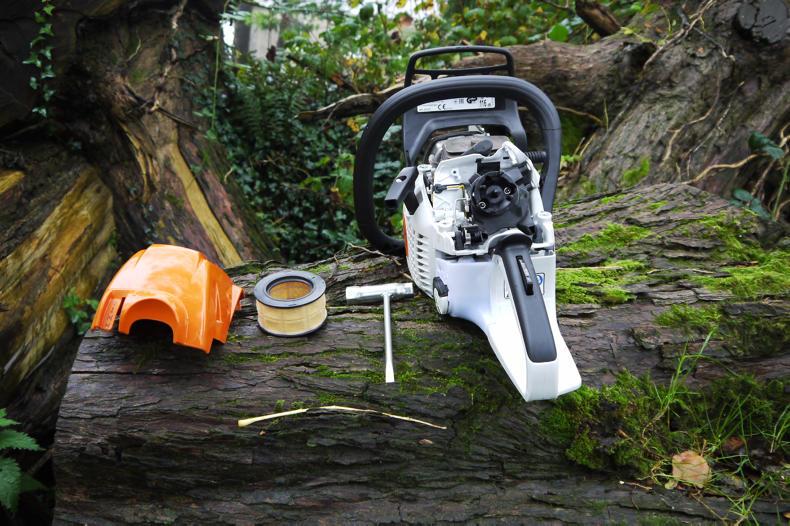
Access to the air flter and spark plug on the Stihl chainsaw requires the chainsaw tool and undoing three screws.
On the STIHL, three screws had to be opened to access the spark plug and air filter with the chainsaw tool which took a bit more time. One could argue how often you actually open this cover but the Oleo-Mac had the upper hand here. Once the cover was removed, the air filter on both machines was easily removed.

On the Oleo-Mac, access to the air filter and spark plug is via a thumbscrew. No tools are required to access it.
Chain and bar adjustment
Both saws use a similar principle in keeping the bar and chain tight, a bolt or bolts clamping the bar with a screw behind them for applying tension to the chain. The STIHL uses one bolt to tighten the bar and chain while the Oleo-Mac uses two. It could be argued that tightening the bar and chain was quicker on the STIHL but there was very little in it.
Throughout the time we used the saws on both large and small timber cuts, neither chain seemed to be lacking oil at any point.
Both saws stop applying oil to the chain when the saw is idle, reducing the amount of oil used and there are no oily spots left on the ground when the saw is left down to move a branch.
Both saws performed very well and there was very little between them.
The STIHL appeared to have the edge over the Oleo-Mac but this was fitted with a longer 18in bar compared with the 16in on the STIHL.
Sawing ability on both machines was comparable with enough power to drive the bar that was fitted.

We were very impressed with both saws.
They performed well, were ideal for smaller and less demanding jobs around the farm and were light to handle.
If trimming a few branches or cutting firewood is all you need from a saw, then either machine is ideal.
But a bigger job might need a larger machine. The anti-vibration systems on both saws gave a more comfortable operation.

Storm Ophelia - power of the weather
In pictures: the shopping list you need to stay safe chainsawing












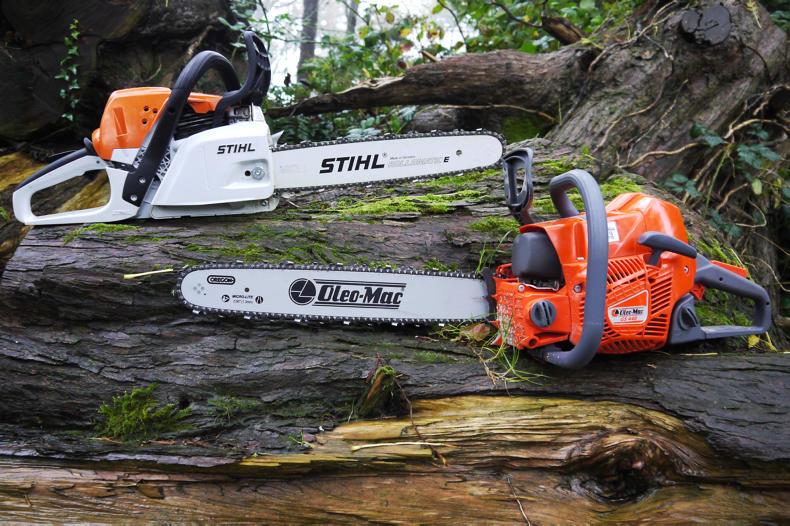


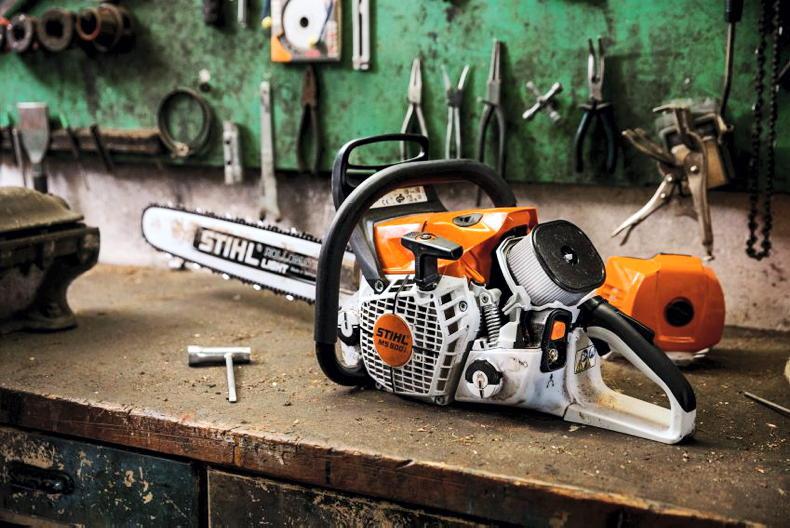

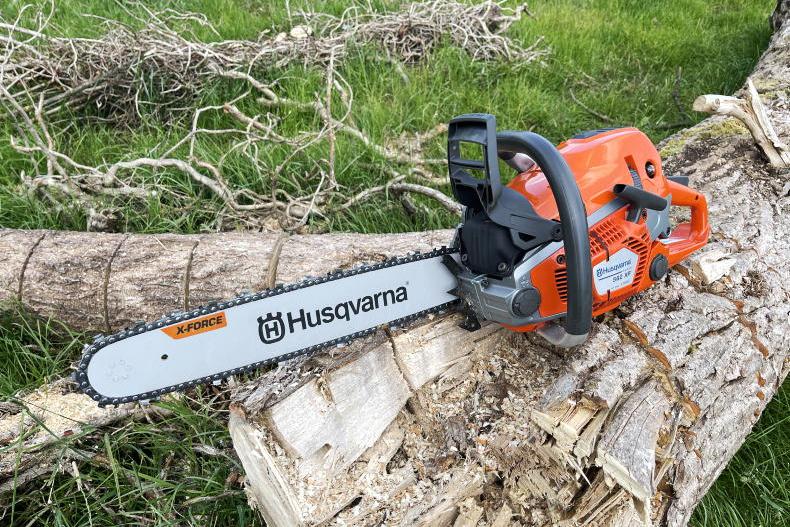
SHARING OPTIONS